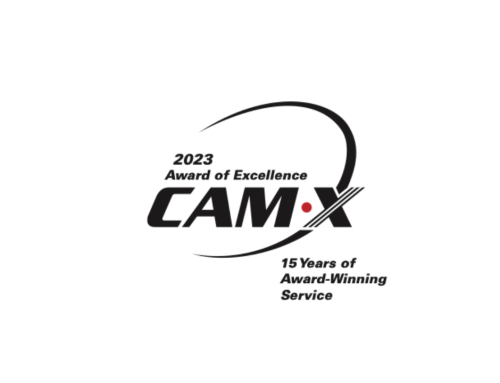You juggle many responsibilities like call overflow if you’re a small business owner. While you may be able to handle all of your duties yourself at first, as your business grows and changes, it becomes more difficult to wear every hat. You may need to hire employees to handle some of the tasks that run your company.
One significant role is customer service. As a small business owner, you can significantly influence customer satisfaction by handling each interaction. If you work in a field with high customer demand, you may not be able to meet expectations on your own.
If you’re struggling with business call overflow or surges in demand, don’t worry — you’re not alone. Call centers across North America work hard to keep up with call volume and ensure that customers are connected to live representatives who can help them make purchases and solve problems.
The best way for small businesses to integrate phone support is by signing up for a call center service like Call Experts. This allows you to access trained agents who will take care of calls for your business without locking you into a long-term contract.
What is a Contact Center?
A contact center is a central location where agents handle customer interactions and call overflow via phone, email, social media, and messaging. Many consumers prefer to contact customer service via phone. According to the Zendesk Customer Experience Trends report, messaging channels are the top preference of consumers. Therefore, companies need flexible, dynamic contact centers to keep up with these changing consumer preferences.
A contact center has many advantages. They handle phone calls but interact with customers using various channels, such as texting. A contact center can reduce customers’ time waiting for agents to answer inquiries by providing multiple channels. Furthermore, a contact center that offers a variety of channels will be able to serve customers better.
Why is a Contact Center Important to Call Overflow?
A contact center is a critical component of any modern company, but it has several uses beyond customer service. Also, many contact centers can support non-traditional business services like order management, HR absence tracking and reporting, and more.
Contact centers help identify competitive advantages and identify customer needs and wants. You cannot obtain these insights through market research, focus groups, or broad surveys. As a result, contact center insights can help a business offer better products and services, influence costs and revenues, and increase market share. In addition, contact center insight has positive benefits for an organization’s reputation and employee engagement.
Many companies now utilize formal contact centers to ensure they get the best results from their customer journey. While many companies build their centers, others hire third-party providers. But an essential investment in customer service can help a company outpace its competitors and drive growth. However, there are some key considerations to consider before implementing a contact center. Read on to learn more about these essential features. You’ll be glad you did.
What is Call Overflow?
Regardless of the type of business you run, you probably deal with incoming calls or call overflow at some point. You might have a steady stream of customers throughout the day, with peaks and troughs in the volume of calls. You may have unexpected spikes in call volume, whether because of a large wedding nearby or a well-connected client posting a glowing review on social media. Call overflow solutions can help your business survive these spikes no matter your reasons.
Not having enough staff is only part of the problem, but having the right technology and metrics. For example, a front desk receptionist costs a lot of money and has limited capacity, so nobody is there to handle your inbound calls when they go home. If you want to reduce the amount of missed calls and boost productivity, you can outsource your phone answering to a call center.
When does Call Overflow Happen?
Surges in business phone calls are nothing new. Many businesses experience high levels of customer service during busy times, such as the holidays, seasonal changes, or inclement weather protocols. While it is essential to plan for these spikes, there are some things you can do to avoid them.
It is essential to have a call center to handle your customer inquiries during busy times. Call centers provide an excellent solution for your business because they can help you manage the increase in calls and answer any customers’ questions. However, if your business experiences frequent surges in phone calls and you’re not prepared for them, it will affect your company’s ability to provide exceptional customer service.
While it is essential to plan for these spikes, there are some things you can do to avoid them.
Look for patterns: One of the first things you can do to reduce spikes in call volume is to look for patterns in your phone records. For example, what days and times do you receive a large number of calls? Do certain events lead to an increase in calls?
Prepare for The Holiday Season: It is one of the most significant times for call surges, but it doesn’t have to be that way. You can prepare for this by ensuring your phone lines are staffed ahead of time and that your website content is up-to-date with the latest information about your products and services.
Post Regular Updates: Many companies post regular updates on their website that include any changes they make with their product or service offerings. Hence, customers know what’s going on at all times. This helps customers feel reassured when they call because they know what’s going on before even picking up the phone!
How do you deal with Overflow and Surges?
Surges and overflows in business phone call volumes are not new, and many businesses experience them at certain times of the year. For example, when the customer base is highest during the holidays, companies can expect a higher call volume. As a result, businesses should make proactive plans to prepare for these spikes, such as adding more agents to handle the additional calls.
Utilize an Inbound Call Center
Consider using a call answering service to handle overflow calls. Call answering services also enable your business to save money, as you no longer have to pay for a receptionist to answer every phone call. In addition, using an answering service will reduce the number of calls you receive while ensuring your customers get a fast and reliable response.
You can use an inbound call center for customers who need immediate assistance and want to make an appointment or place an order. With this approach, your company will receive messages from the inbound call center so you can follow up with customers who have placed orders.
Be Prepared With Call Forwarding
Enabling call forwarding from your existing phone service provider or using a call-forwarding program can help you handle overflow calls. These solutions are cost-effective but are not ideal for high-volume call volumes. For example, when an answering service cannot answer an incoming call, it will go to voicemail, and the customer may end up calling your competitors instead.
In addition, you may not want to answer every single business call, especially after hours. Answering every call can cost you a fortune, and you may not want to answer calls from customers at odd hours. Luckily, you can automate the process and pay for a low-cost service that handles business phone call overflows and surges.
Increase the Number of Lines You Use With Your Business.
Increasing the number of phone lines your business has access to reduces the risk of dropped calls and missed opportunities. Your business will also give more customers access to live agents instead of automated systems, which can improve your company’s image and boost customer satisfaction.
If your business relies on phone calls for sales or customer service, you only have a few seconds to make a good impression on potential customers. So you need to give them something that sets you apart from the competition in those precious moments. One way to do that is through better phone availability.
An Automated Attendant Protects Your Business When You Are Too Busy to Answer.
An automated attendant is usually the first thing a customer will hear when they call your business’s mainline number. A computerized attendant acts as a virtual receptionist who answers calls and routes them to the correct department or person based on caller input. These systems can be very complex and include many prompts, so the customer is quickly directed to the right place. Still, they are also customizable, so you can create a simple menu with only two or three options for customers to choose from.
Call Queuing Technology Can Make a Huge Difference.
This solution is often used with an automated attendant and is a great way to manage many incoming calls. For example, when too many customers call at once, the system will put them into a “queue” where they can hold while waiting for an available agent to answer their call. This helps make sure no one gets stuck waiting on hold indefinitely without being able to speak with someone who can help them!
24/7 After Hours Support
If you run a business that experiences surges in calls or overflow calls during peak times, you’ll want to consider a 24/7 after-hours support option. This type of service will be a lifeline when staff cannot handle the additional workload. In addition, by outsourcing the service, you can reduce costs while providing excellent customer service. Here are a few reasons to look into such a service:
Busy companies need a way to scale and satisfy their customers. While some can extend their usual business hours, others can’t handle the demand for 24/7 support. Outsourcing contact center support reduces operating costs by eliminating internal staffing and resource needs. Businesses of all sizes need this type of service, as the need for it is growing in nearly every industry. In addition, a 24/7 after-hours support service can alleviate the stress that comes with answering countless phone calls throughout the day.
An overflow answering service can also improve team responsiveness. Using an after-hours answering service can keep your team from getting overwhelmed with call volume while allowing them to focus on essential tasks, such as focusing on customer service. So whether you need assistance during peak hours or want to provide customer service and lead screening, 24/7 After Hours Support can provide you with the peace of mind you need.
Help Desk and FAQ
Providing customer self-service options, such as an FAQ, can reduce support calls and service desk tickets. Businesswire reports that 60% of U.S. consumers prefer digital self-service tools. Self-serving options are relatively easy to implement and provide many benefits. For example, self-service options can provide 24×7 customer support, cutting down on phone calls while also increasing productivity. Knowledge base content, such as FAQs and guides, can also handle common customer inquiries.
While hiring additional staff to handle business phone calls is always an option, it may not always make financial sense. Not only is hiring a front desk receptionist a considerable investment, but it also has limited capacity, meaning nobody answers your inbound calls when they leave. Outsourcing phone support to a phone support company can be an efficient and cost-effective alternative. For example, Call Experts provides business phone call answering services, which include the services of highly trained virtual receptionists.
On-Call and Call Routing
Call overflow is common among companies and call centers, especially when they’re on the receiving end of large sales surges. This can be a big issue if your company doesn’t have the manpower to handle the calls in-house.
Call routing services help you manage incoming calls more efficiently by sending them directly to employees who work close to their geographical locations. When it comes to customer service, this helps cut down on the amount of time it takes for a customer to be satisfied — improving customer satisfaction.
An on-call answering service helps you deal with seasonal surges, holiday sales, and special events by providing trained agents who can handle the volume of calls. For call routing to work, you should have an on-call schedule in place. This will help you make sure that all members of your customer service department can answer calls at different times of the day. When big businesses have on-call schedules, they usually have supervisors who manage incoming calls and distribute them among the other employees in the department. This helps create more efficiency by sending calls directly to available employees.
If you’re looking for ways to answer more calls without increasing resources, consider setting up a toll-free number for your business. Your customers will appreciate that they don’t have to pay for the privilege of calling your business; instead, the cost of the phone call is covered by the company whose number they are dialing. You can set up toll-free numbers with a most major cell phone or landline providers.
When you sign up with Call Experts, you get a dedicated team of experienced agents who will work to improve your customers’ experience. We’ll answer the phone 24/7 using customized greetings that reflect your business. When you sign up with Call Experts, you get live-person answering anytime — 24 hours, seven days per week. Also, customized greetings specific to your business calls are forwarded to on-call staff as needed, and a consultative plan fits your financial and business needs.







